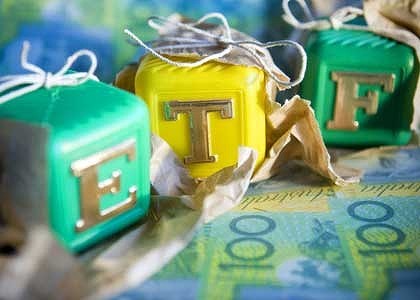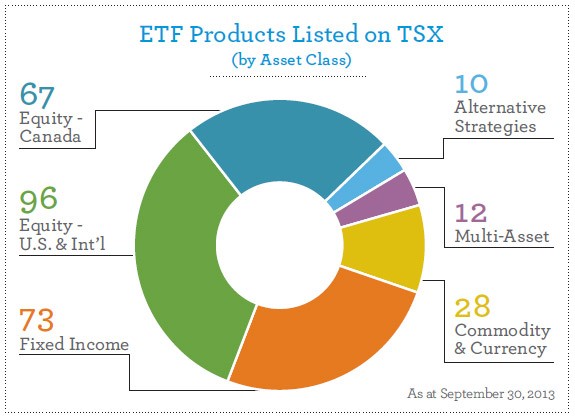ETF Investing Why Exchange Traded Funds Are In My Portfolio
Post on: 16 Март, 2015 No Comment

by Todd Smith on 2012-10-11 9
If youre a first time investor, its best to start investing with mutual funds. Mutual funds offer a simple way to garner near instantaneous diversification, the liquidity to buy and sell whenever you want (within limits), along with professional management. In particular, you should consider index funds for their low-cost and tax efficient approach. I do think though that along with index funds, theres room in a portfolio for Exchange Traded Funds (ETFs). ETFs, when used appropriately, are really an extension of the index mutual fund, but offer investors a myriad of opportunities otherwise not available to a regular old mutual fund.
Why ETF Investing Should Be Part Of Your Investment Plan
Heres a brief primer on this investment vehicle: an ETF tracks an index or a basket of assets like an index fund, but trades like a stock on an exchange. These securities share the diversification and performance of an index fund, but their pricing, tax efficiency, and investment flexibility make them a lot more alluring for many investors. In fact, I know several financial planners who recommend nothing but ETF portfolios for their clients (even though many won’t because they dont get paid through such recommendations).
1. Exchange traded funds have efficient pricing.
An ETF works a lot like a typical stock they can be traded anytime during the day, theyre liquid and they experience price changes throughout the day. But theyre also like index funds, where their prices go in lock step with the securities they track. Whats good about this type of investment is that anyone trading them can make decisions and transactions on the spot, in response to market conditions. Under such conditions, ETFs behave quite efficiently. According to Morningstar, ETFs are the best choice for investors who are seeking cost-effective methods of investing large amounts of money that they are planning to hold over the long term. And interestingly, Morningstar also points out that for all other situations, your average low-cost index mutual fund isnt much different from an index ETF.
If you are interested in an ETF based portfolio, here are our recommended brokers.
2. ETF costs are manageable.
Index funds are already quite low, but often, the expense ratio of ETFs can be even lower. Of course we like lower costs, because that means we keep more of the profits to ourselves! But, be careful: buying and selling an ETF will incur commission charges as you would trading stocks, so you need to consider this cost when evaluating overall investment costs.
3. Exchange traded funds are tax efficient.
I also like the fact that capital gains tax exposure is minimized with ETFs, thanks to the way they are redeemed, along with the passive way they are managed, resulting in minimal turnover. ETF based sale transactions are treated in the same way as a stock sale, when it comes to tax liabilities. The ability to buy and sell on the open market avoids the problem that mutual fund shareholders typically experience. In particular, when other shareholders sell shares from a fund, a mutual fund company may ultimately have to sell some of the securities it holds and realize a capital gain which is allocated to all shareholders of the fund. And dont forget mutual funds are required to pay out all dividends and capital gains annually. So even if the portfolio has lost value that is unrealized, there is still a tax liability on the capital gains that does have to be realized. ETFs typically do not have this problem.
4. ETFs have flexibility.
One of the biggest differences between an ETF portfolio and a regular mutual fund investment portfolio is the flexibility you get. This is more important for those of you who are a bit more sophisticated in your approach and/or who like hedging your stock investments. For instance, ETFs can be purchased on margin, bought and sold at intraday prices, and can be utilized with stop and limit orders or sold short. These are things that you cant do with a regular old mutual fund. In particular, if you want to redeem your mutual fund shares during the day, youll need to wait till the end of the day to get your Net Asset Value (NAV), and therefore your sale price, locked.
ETF Investing: Some Shortcomings

I like the flexibility that ETFs offer: stop and limit orders can be beneficial to risk averse investors, and using an ETF for covered call writing provides great diversification for more conservative stock and options investors. However, Ive got a few concerns. The technical gripes I have include the fact that the open market pricing gap between the NAV and actual share values (especially for a less liquid fund) can be quite noticeable and determined simply by supply and demand. So I can see how ETFs can potentially become more overvalued or undervalued compared to their mutual fund counterparts. Also, some ETFs aggressively target small regions, commodities and industries, and seem too risky for most investors. In this case, its investor beware! ETFs can be a great investment to own just make sure you know what it is exactly that you own!
But probably my biggest gripe with ETFs is that they encourage short-term market timing and frequent trading. As an advocate of long-term investing, I believe that most people professional or novice are NOT able to adequately time the market on a consistent basis over time. But more than that, investors who frequently trade in and out of ETFs are racking up commissions costs and potential taxes that ETFs were, in part, designed to avoid. Look at the turnover rates that Business Week recently reported:
“Turnover rates for ETFs are at an average annual rate of 200% per year (an average holding period of just six months), with the most popular ETFs recently running turnover rates from 578% to 735%, all the way up to 7,100% (Russell 2000 iShares (IWM). a small-cap stock index) and 8,500% (SPDR Energy shares (XLE) ). In all, some $390 billion of the current $410 billion ETF base represents a vast departure from the beneficial attributes of the original index fund.”
There are several ETF “trading systems” out there that look interesting, but I have yet to see one that offers superior, long-term performance. Those that “back test” their performance don’t offer me comfort. At some point, Ill report back on what I find.
The bottom line here is that ETFs used wisely can be a great thing. You can use them as part of your long-term approach to lower costs, to reduce tax liabilities, and to achieve a solid and well-targeted asset allocation.
Categorized under: Investment














